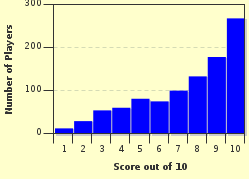Quiz Answer Key and Fun Facts
1. Belize was adopted as the country's name in 1973. Prior to this it was known by what name, reflective of the nation of which it was a colony?
2. As well as a change of name, Belize has undergone a change of capital. The nation's largest city, Belize City, was capital until 1971 when the capital was moved to the newly built city of Belmopan. What natural phenomenon had been the spur towards moving the capital?
3. Belize shares a land border with just two countries. Which two?
4. Running for 300 kilometres off the coast of Belize are a series of over 400 islands known as cayes. Each of these cayes rises from a natural structure that is the largest of its kind in the northern hemisphere and the second largest in the world. What kind of structure is this?
5. Belize is a warm country. The average temperature all twelve months of the year is over 18°C (64.4°F). By Köppen climate classifications this means that Belize has what type of climate?
6. Which of the following statements about Belize is NOT true?
7. At the turn of the 21st century, the tallest building in Belize was still a structure that was built by the civilization that dominated the area in the first millennia of the modern era. It stands in the complex of temples at Caracol in the west of Belize which can be found in the foothills of the mountains that bear that civilization's name. What are the mountains called?
8. Situated off the coast of Belize is a giant underwater sinkhole, which at 300 metres diameter is believed to be the largest of its kind in the world. Its most striking feature is its colour, which makes it stand out from the ocean surrounding it and gives it its name. What is it called?
9. For many years the small seaside town of Placencia claimed its own world record, which it lost temporarily after weather damage in 2001. What was this record?
10. Despite having self-government from 1964, movement towards full independence for Belize was very slow. The hold-up was due to a territorial claim that dated back to the 18th century. One country claimed Belize as the 23rd department of its own country and refused to acknowledge its independence until 1992, eleven years after the rest of the world. Which country is this?
Source: Author
Snowman
This quiz was reviewed by FunTrivia editor
Pagiedamon before going online.
Any errors found in FunTrivia content are routinely corrected through our feedback system.

